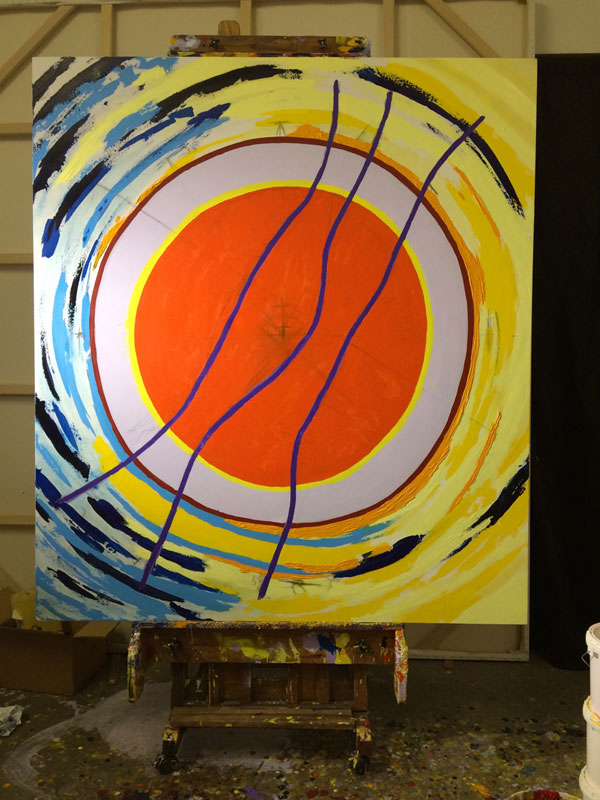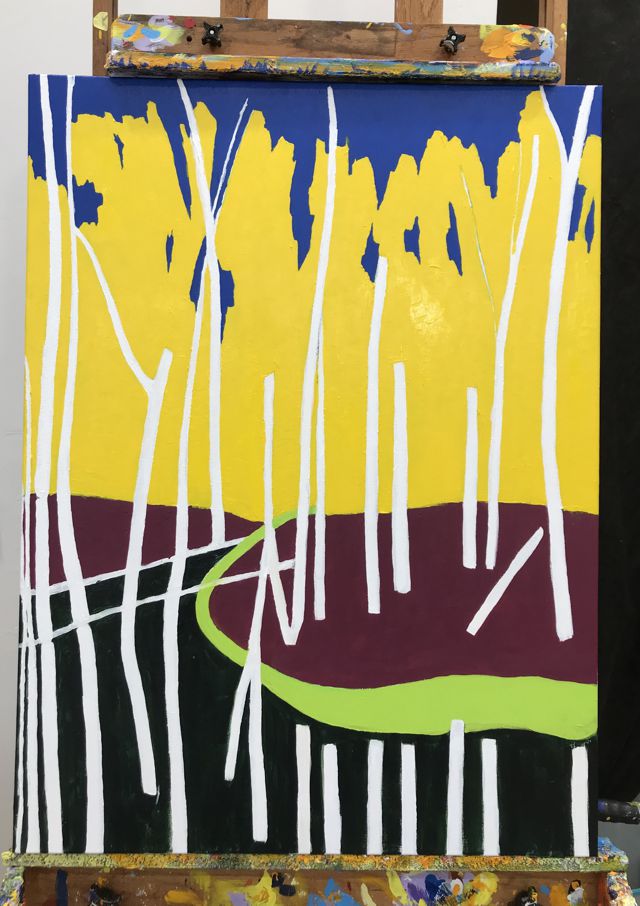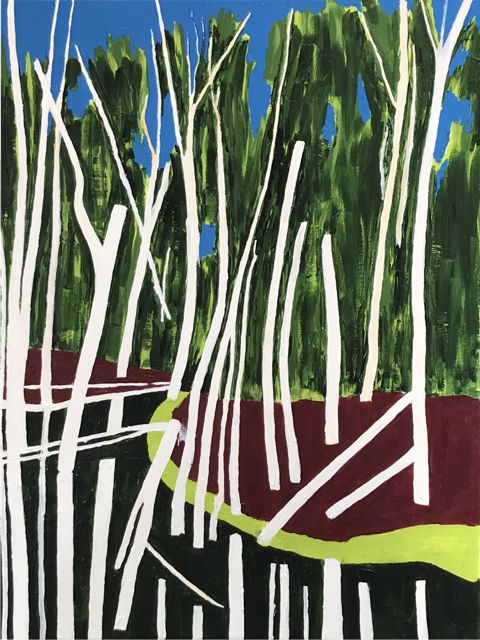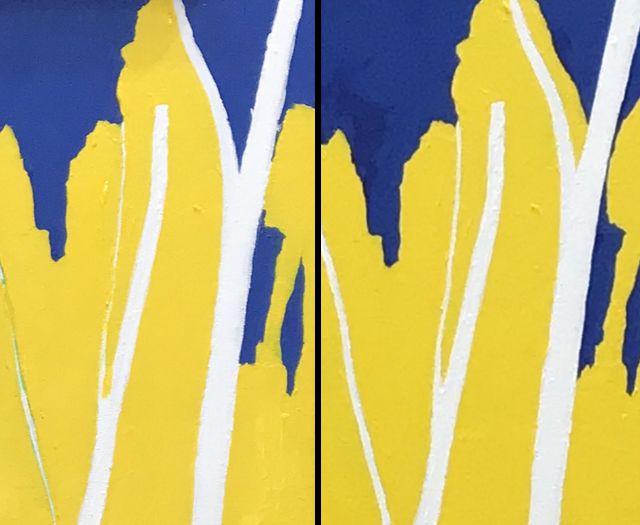more about paintings
Madrone
I first observed madrone trees in Berkeley in the fall of 1963. They can grow to be sizable trees with smooth sinuous curvilinear trunks. I sketch them, and sometimes incorporate madrone-based forms in my drawings and paintings.

Up and to the right is a circular form painting of similar motif, composition, and coloration, to the paintings above. It illustrates the interaction between the contrasting blue lines and orange area of the painting.
The three brownish-maroon lines in the canvas to the right are an example of the madrone motif that I sometimes use in my paintings.
To add contrast, and strengthen the visual impact of the painting, I applied a layer of dark blue over the portion of the diagonal line running through the orange center of the canvas.
Look closely at paintings. Observe variations in the thickness and texture of the paint, whether canvas — painted or bare — is visible, or whether traces of an underlying sketch or diagram are present. Did the artist scrape off and repaint something? Try to imagine how the artist made the painting.
Making a Painting
It began with a birch and spruce bog in the taiga near the University of Alaska's Large Animal Research Lab in Fairbanks.
I took several cellphone snapshots of the bog, and I printed a copy of one of the photos. I made sketches of that image, and a small painting based on it. I then began a larger version of the painting.
Each iteration involved rearranging and simplifying the paintings.
This photo illustrates the state of the large canvas as of 9:15 pm, July 31, 2022.
I am not interested in painting pictures, and I was dissatisfied with the naturalistic feel of the large canvas. That night, and over the next two days I reworked the canvas. The results are shown to the right.
To see the final version of the painting, Click here
Preliminary Study
Considerable work was required to finish the painting.
The final version of the painting diverges considerably from the actual scene, and from the small study.
Note the smoothed edges of the intensified white areas of the images to the right – also the application of yellow to the triangular area on the upper right corner of finished painting.
Compare the refinement of the shape of blue form adjacent to the vertical thick white line between these two images.
initial final







